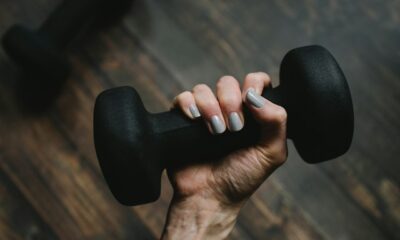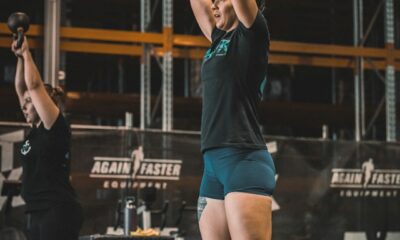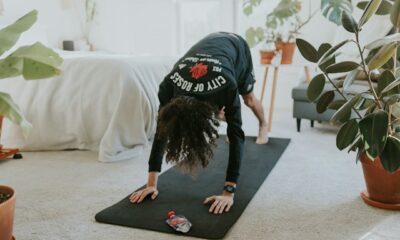Fitness
Perfect Gym Storage Solution: What You Need for a gym
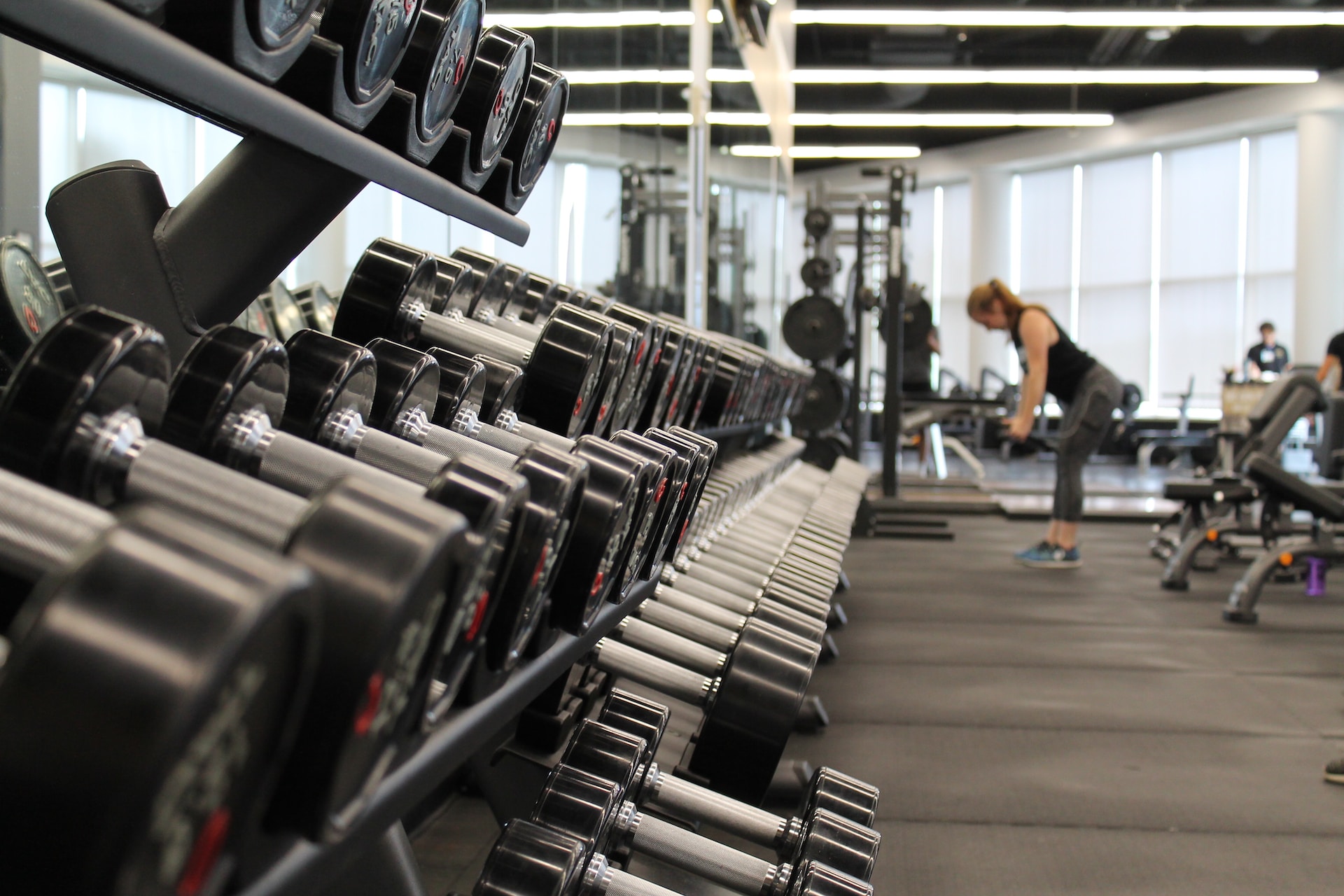
If you operate your own professional gym or are looking to create a home setup, it’s crucial that you carefully consider the perfect gym storage solutions. A tidy gym is, without a doubt, a happy environment for people to work out in!
Good storage will help protect equipment from scratches and other damage, make it easy to find the location of equipment, and prevent hazards such as trips.
It can also help the gym to feel more of a clean and organized environment that can keep members motivated while working out, which typically leads to a higher retention rate.
When it comes to gym storage, many companies do not share the same expert knowledge as PowerGym Fitness. PowerGym is a supplier of commercial gym equipment, from weights and barbells to high-end strength training machines, with clients throughout the world.
They also provide expert pieces of advice to gyms and support for installing the perfect setup.
PowerGym Fitness has provided us with some pointers on how you can create the perfect gym storage solution for your commercial facility or home setup.
Dumbbell Racks for perfect gym storage
The type of storage you will require can depend on the type of equipment that your gym provides. For example, some gyms may specialize in cardio equipment as opposed to strength training, or vice versa. That said, most gyms will typically include dumbbells.
Dumbbells are a popular form of free weights that can help users to build muscle mass. Dumbbell racks are one of the best ways that you can keep your gym tidy and free of hazards.
Without a rack, there would be no designated place for members to collect and return a dumbbell. Dumbbells left on the floor can cause damage and can be hazardous for other members when walking around the gym space.
These racks can hold a certain amount of unused dumbbells securely. All around, it adds a safer and more organized structure to your environment and increases the longevity of the dumbbells.
Weight Plates Holders
As with dumbbells, most gyms typically include some type of weight plate. Tri grip and bumper weight plates are two examples that are available for purchase at PowerGym Fitness.
The plates can attach to a barbell for effective and flexible weightlifting routines. One type of weight plate holder includes a storage tree.
This provides the option of a simple vertical holder where the plates can just slide onto a storage horn. Another option is a wall weight plate storage, allowing easy access to plates from a wall position – plus, it saves space and improves your gym’s aesthetic design!
Mat Hangers for perfect gym storage
Gym mats are essential for exercises that require closer physical contact with the floor. This can include press-up exercises as well as Yoga, Pilates, and studio workouts. Mats provide an extra level of comfort so that you don’t encounter discomfort when encountering the floor.
Since many people use mats daily, there is a lot of wear and tear. Mats with poor storage can lead to greater damage, resulting in you needing to replace the mats sooner than required. The unutilized mats are stored safely with a mat hanger to prevent unnecessary damage.
Barbell Storage: perfect gym storage
Whether you use a barbell freely or with a weight plate attached, it’s important that you store the bar appropriately when it’s not in use. Heavy bars can lead to floor damage and potentially serious injury if it drops to the floor.
Like with weight plates, there are options for horizontal and vertical storage. These storage products can either be attached to the wall or the floor. They provide an organized and safe place for barbells to rest when not in use.
Cable Attachment Racks
Cable attachments are additional products that can help athletes take their strength training to the next level with varied workouts. With several types of attachments available, from revolving bars to handles and ropes, they expand the options that are available on a cable machine.
Most of these attachments are small, so they can quickly become lost or muddled with other equipment. A cable attachment rack is a great way to store the attachments so that gym members can easily see the required location of the attachments.
Power Rack Storage Horns
Power racks are fantastic pieces of equipment to have in your gym. They are premium products that often act as the centerpiece of the gym. Power racks provide a safe space to perform a wide range of exercises, with freedom of choice left to the user.
Alongside the power rack, it’s widely recommended that you get storage horns that will seamlessly attach to the power rack. These horns can then be used as a storage option for weight plates. It will allow you to free up space around the gym and provides users to quickly and easily access the plates.
Storage Cages
The storage options discussed so far clearly relate to products specifically designed for certain gym equipment. To improve your facility’s tidiness, safety, and structure even further, you can get a storage cage that will hold the rest of your smaller items.
This can include things such as medicine balls, bags, and boxing equipment. The cage can usually be locked for added security, and with lockable wheels, it’s easy to transport the equipment from place to place.

Fitness
PHU – A Comprehensive Guide to Personal Hygiene Upkeep

Personal Hygiene Upkeep (PHU)! In a world where cleanliness is key, mastering the art of personal hygiene is more important than ever. From head to toe, maintaining proper hygiene isn’t just about looking good; it’s about feeling great and staying healthy. So, grab your soap and get ready to dive into the essential tips and tricks for keeping yourself squeaky clean inside and out!
The Importance of PHU
Maintaining personal hygiene upkeep (PHU) is crucial for overall well-being. It goes beyond just looking clean; it’s about preventing illnesses, boosting self-confidence, and promoting good health habits.
When you prioritize PHU, you not only take care of your physical appearance but also reduce the risk of infections and diseases. Good hygiene practices can prevent the spread of germs and bacteria that could harm your health.
Additionally, practicing proper hygiene shows respect for yourself and those around you. It reflects a level of responsibility towards maintaining a healthy environment in both personal and social settings.
By incorporating PHU into your daily routine, you are investing in your long-term health and happiness. From washing hands regularly to showering daily, each small habit contributes to a healthier lifestyle overall.
Daily Habits for Maintaining PHU
Maintaining good personal hygiene is crucial for overall health and well-being. Establishing daily habits can help you keep up with your PHU effortlessly.
Start your day with a refreshing shower or bath to cleanse your body and wake yourself up. Don’t forget to wash your face, armpits, genitals, and feet thoroughly.
Proper handwashing throughout the day is essential to prevent the spread of germs. Use soap and water, scrub for at least 20 seconds, and dry your hands properly.
Brushing your teeth twice a day helps maintain oral hygiene. Remember to floss daily to remove food particles between teeth that brushing alone can’t reach.
Regularly trim nails to prevent dirt buildup underneath them. Clean under your nails with a nail brush regularly as well.
Stay hydrated by drinking plenty of water throughout the day – it helps flush out toxins from your body and keeps you feeling fresh.
Essential Products for PHU
When it comes to personal hygiene upkeep (PHU), having the right essential products can make all the difference. Starting with your daily shower or bath, investing in a gentle yet effective body wash or soap is crucial for maintaining clean and healthy skin.
For proper handwashing throughout the day, a mild hand soap or sanitizer is essential to keep germs at bay. Don’t forget about oral hygiene – a quality toothbrush, fluoride toothpaste, and alcohol-free mouthwash are key players in keeping your smile bright and breath fresh.
Hair care involves using suitable shampoos and conditioners suited for your hair type to maintain its health and shine. Nail care tools like nail clippers, files, and cuticle pushers help keep your nails neat and tidy.
Facial cleansers catered to your skin type aid in removing dirt and impurities while maintaining hydration. Deodorants or antiperspirants are vital for managing underarm odor throughout the day.
Hygiene Tips for Different Parts of the Body
Maintaining good personal hygiene involves paying attention to different parts of your body. When it comes to hygiene tips for specific areas, it’s essential to approach each one with care and thoroughness.
Let’s start with the hands – a crucial part that requires frequent washing throughout the day. Proper handwashing can prevent the spread of germs and infections, so lather up with soap and water for at least 20 seconds.
Moving on to oral hygiene, brushing your teeth twice a day is vital for keeping your mouth healthy. Don’t forget to floss daily and use mouthwash for added freshness.
When it comes to haircare, choose shampoos and conditioners that suit your hair type. Regularly trimming your nails helps prevent dirt buildup underneath them.
Facial hygiene involves cleansing gently and using products suitable for your skin type. Managing underarm odor includes using deodorants or antiperspirants as needed.
And lastly, intimate hygiene is crucial for both men and women – opt for gentle cleansers specifically designed for this sensitive area.
Common Mistakes to Avoid in PHU
Maintaining personal hygiene is crucial for overall health and well-being. However, there are common mistakes that people often make when it comes to Personal Hygiene Upkeep (PHU) that can impact their cleanliness and health.
One mistake to avoid is neglecting proper handwashing techniques. Many people rush through washing their hands or skip it altogether, leading to the spread of germs and illnesses.
Another common mistake is not changing undergarments daily. Wearing the same underwear for an extended period can lead to bacterial growth and unpleasant odors.
Improper oral hygiene practices like forgetting to brush your teeth twice a day or skipping flossing can result in cavities, gum disease, and bad breath.
Neglecting regular bathing or showering can also lead to body odor, skin infections, and overall discomfort.
Remember to pay attention to all aspects of personal hygiene consistently to maintain a clean and healthy lifestyle.
Incorporating PHU into Your Routine
Incorporating Personal Hygiene Upkeep (PHU) into your daily routine is essential for overall well-being. Start by establishing a consistent schedule that includes specific times for showering, oral care, and grooming. Make it a habit to wash your hands regularly throughout the day, especially before eating or touching your face.
Set reminders if needed to ensure you don’t skip any steps in your hygiene routine. Keep essential products like soaps, shampoos, toothpaste, and deodorants easily accessible in your bathroom or travel bag. Find products that suit your skin type and preferences to make the process more enjoyable.
Experiment with different hygiene practices and products to find what works best for you. Don’t forget about mental health – taking care of yourself physically can also positively impact your mental well-being.
By integrating PHU seamlessly into your lifestyle, you’ll not only look good but also feel fresh and confident every day.
Importance of maintaining good personal hygiene
Personal hygiene upkeep is not just about looking good; it’s about feeling good too. Maintaining good personal hygiene plays a vital role in promoting overall health and well-being. By practicing proper hygiene habits, you can prevent illnesses, infections, and unpleasant odors.
Good personal hygiene also boosts self-confidence and improves social interactions. When you feel clean and fresh, you exude a positive aura that others are naturally drawn to. Additionally, proper hygiene practices show respect for yourself and those around you.
From brushing your teeth to washing your hands regularly, each small habit contributes to the bigger picture of maintaining optimal health. Taking care of your body through regular grooming routines not only benefits you physically but also mentally.
So remember, incorporating good personal hygiene into your daily routine is an investment in yourself that pays off in numerous ways – from better health outcomes to increased self-esteem.
Bathing and showering
Bathing and showering are essential aspects of personal hygiene upkeep. They not only cleanse the body but also refresh the mind. The warm water cascading down can wash away the stress of the day, leaving you feeling rejuvenated.
When it comes to bathing, using a good quality soap or body wash is key. Choose products that suit your skin type to avoid any irritation or dryness. Don’t forget to scrub gently behind your ears, under your nails, and in between toes where dirt can accumulate.
Showering is a quick and efficient way to maintain cleanliness on a daily basis. Make sure to pay attention to areas prone to sweat buildup like armpits and groin. Use a loofah or exfoliating glove for thorough cleaning and improved circulation.
Whether you prefer baths or showers, taking the time for this self-care ritual can have both physical and mental benefits that contribute to your overall well-being.
Proper handwashing techniques
Proper handwashing techniques are crucial for maintaining good personal hygiene. To effectively cleanse your hands, start by wetting them with clean water. Apply enough soap to create a lather and make sure to scrub all surfaces of your hands, including between your fingers and under your nails. Remember to wash for at least 20 seconds – singing the “Happy Birthday” song twice can help you keep track of time.
Rinse your hands thoroughly under running water to remove all traces of soap. When drying off, use a clean towel or air dry them. It’s important to wash your hands frequently throughout the day, especially before preparing food, after using the restroom, or touching common surfaces in public places.
By incorporating proper handwashing into your routine, you can significantly reduce the spread of germs and protect yourself from illnesses. So next time you reach for that sink, remember: thorough handwashing is key to staying healthy!
Oral hygiene (brushing, flossing, mouthwash)
Maintaining good oral hygiene is crucial for overall health and well-being.
Brushing your teeth at least twice a day helps remove plaque and prevent cavities. Remember to use fluoride toothpaste and replace your toothbrush every three to four months.
Flossing is often overlooked but essential for removing food particles and bacteria from between teeth that brushing alone can’t reach. Make it a habit to floss daily to keep your gums healthy.
Mouthwash not only freshens breath but also helps kill bacteria that cause plaque buildup and gum disease. Choose an alcohol-free mouthwash if you have sensitive gums.
Regular dental check-ups are vital for detecting any issues early on and maintaining a healthy smile. Don’t forget to schedule appointments with your dentist every six months.
By incorporating these simple practices into your daily routine, you can ensure optimal oral hygiene and promote a confident smile!
Hair care, Nail care
Hair care and nail care are essential aspects of personal hygiene upkeep. When it comes to hair care, choosing the right shampoo and conditioner for your hair type can make a significant difference in keeping your locks healthy and shiny. Regular trimming to get rid of split ends is also crucial for maintaining the overall health of your hair.
Nail care involves keeping your nails clean and trimmed to prevent dirt buildup and potential infections. Remember to moisturize your cuticles regularly to promote nail growth and prevent them from becoming dry or brittle. Using a gentle nail file instead of harsh metal ones can help avoid damaging the nails.
Incorporating these simple yet effective practices into your daily routine can contribute to healthier hair and nails, enhancing not only your appearance but also boosting your self-confidence. Treat yourself with some TLC by giving proper attention to both your hair and nails!
Facial hygiene
When it comes to facial hygiene, taking care of your skin is essential for a healthy complexion. Start by cleansing your face twice a day with a gentle cleanser that suits your skin type. This helps remove dirt, oil, and impurities that can clog pores and lead to breakouts.
Exfoliating regularly can help slough off dead skin cells, revealing brighter and smoother skin underneath. Remember not to over-exfoliate as it can irritate the skin. Moisturizing is key in maintaining hydration levels and keeping the skin supple.
Using sunscreen daily is crucial for protecting your skin from harmful UV rays that can cause premature aging and damage. Incorporating a weekly mask or treatment can address specific skincare concerns like acne, dryness, or dullness.
Remember to also avoid touching your face frequently to prevent transferring bacteria onto your skin. Staying hydrated and eating a balanced diet contribute to overall facial health.
Underarm and body odor management
Underarm and body odor management is an essential aspect of personal hygiene upkeep. To combat unwanted odors, start by washing your underarms thoroughly with soap and water during your daily shower routine. Make sure to dry the area well afterward to prevent bacteria growth.
Consider using antiperspirants or deodorants to help control sweat and mask any potential odor. Antiperspirants work by blocking sweat glands, while deodorants contain antibacterial agents that target odor-causing bacteria. Experiment with different products to find what works best for you.
Wearing breathable clothing made from natural fibers like cotton can also help reduce body odor by allowing your skin to breathe and preventing excessive sweating. Avoid tight-fitting clothes that can trap moisture and create a breeding ground for bacteria.
Maintaining good overall hygiene, including regular showers, clean clothes, and hair care, can contribute to reducing underarm and body odor. Don’t forget to stay hydrated throughout the day as well; drinking plenty of water helps flush out toxins that can contribute to unpleasant odors.
Intimate hygiene for men and women
Intimate hygiene is a crucial aspect of personal care for both men and women. When it comes to this sensitive area, it’s essential to use mild, pH-balanced cleansers specifically designed for intimate use. Avoid harsh soaps or scented products that can disrupt the natural balance.
For women, always remember to wipe from front to back after using the restroom to prevent bacteria from entering the vaginal area. Opt for cotton underwear over synthetic materials to allow proper airflow and reduce moisture buildup. Change out of wet bathing suits promptly.
Men should also pay attention to their intimate hygiene by washing the genital area daily with gentle soap and water. Trim body hair in this region carefully to maintain cleanliness and reduce odors. Both genders should avoid douching as it can disturb the natural flora.
Maintaining intimate hygiene is not only about cleanliness but also about respecting your body’s delicate balance.
Hygiene during exercise and sports
Maintaining good personal hygiene during exercise and sports is crucial for overall health and well-being. When engaging in physical activities, it’s essential to wear clean workout clothes made from breathable fabrics to prevent sweat buildup and bacterial growth.
Always remember to shower after exercising to remove sweat, dirt, and bacteria that could lead to body odor or skin infections. Don’t forget to wash your workout gear regularly as well.
Properly hydrate before, during, and after your workouts to help flush out toxins through sweating. Use antiperspirant deodorants to combat underarm odor while staying active.
Keep a pack of disinfectant wipes handy at the gym or when playing sports to wipe down equipment before and after use. This simple step can help reduce the spread of germs among fellow athletes.
Incorporate post-workout stretches into your routine not only for muscle recovery but also for maintaining flexibility which contributes positively towards proper hygiene practices in exercise settings.
Hygiene in the workplace
Maintaining good hygiene in the workplace is essential for a healthy and productive environment. Start by keeping your workspace clean and organized, wiping down surfaces regularly to prevent the spread of germs. Remember to wash your hands frequently, especially after using shared equipment or before eating.
Properly disposing of trash and food waste is crucial to avoid attracting pests that can compromise hygiene standards. Encourage your colleagues to follow hygienic practices like covering their mouths when sneezing or coughing and staying home if they are feeling unwell.
Regularly cleaning communal areas such as kitchens, bathrooms, and meeting rooms helps uphold cleanliness throughout the office space. Providing hand sanitizers and tissues can also promote better hygiene habits among coworkers.
By prioritizing hygiene in the workplace, you not only protect yourself but also contribute to a healthier work environment for everyone around you.
Hygiene while traveling
Maintaining good personal hygiene while traveling is essential to stay healthy and feel fresh throughout your journey. Whether you’re embarking on a short weekend getaway or a long-haul flight, it’s important to prioritize your hygiene routine.
Pack travel-sized toiletries such as hand sanitizer, wet wipes, and travel toothbrush kits to ensure you can freshen up on the go. Opt for unscented products to avoid triggering allergies or sensitivities while traveling.
When using public restrooms during your travels, always carry toilet seat covers or disinfecting wipes to maintain cleanliness and minimize exposure to germs.
Don’t forget about oral hygiene – remember to brush and floss regularly even when you’re on the road. Stay hydrated by drinking plenty of water throughout your journey to flush out toxins and keep your skin looking radiant.
Prioritize rest and relaxation during your travels as lack of sleep can compromise your immune system. Take care of yourself so you can fully enjoy all the adventures that await you!
Soaps, shampoos, and conditioners
When it comes to personal hygiene upkeep, choosing the right soaps, shampoos, and conditioners is key. Your skin and hair deserve products that are gentle yet effective in maintaining cleanliness and health.
Opt for soaps that are mild and suitable for your skin type. Look for natural ingredients like aloe vera or shea butter to nourish your skin while cleansing away dirt and oil.
For your hair care routine, select shampoos that address specific needs such as volumizing, moisturizing, or anti-dandruff. Follow up with a conditioner to keep your locks smooth and manageable.
Consider using sulfate-free options to prevent stripping away natural oils from both your skin and hair. Pay attention to the ingredients list and avoid harsh chemicals that may cause irritation.
Experiment with different brands until you find what works best for you – everyone’s body chemistry is unique!
Deodorants and antiperspirants
Deodorants and antiperspirants play a crucial role in maintaining personal hygiene by keeping body odor at bay. Deodorants work by masking or neutralizing unpleasant odors, while antiperspirants help reduce sweat production. When choosing a deodorant or antiperspirant, consider your skin type and any sensitivities you may have.
Opt for products with natural ingredients that are gentle on the skin yet effective in controlling odor and wetness. Whether you prefer roll-ons, sprays, sticks, or creams, there is a wide range of options available to suit your preferences.
It’s important to apply deodorant or antiperspirant daily after showering to ensure long-lasting freshness throughout the day. Remember to read the instructions on the product packaging for best results.
Find a scent that complements your body chemistry and leaves you feeling confident all day long. Experiment with different brands until you find one that works well for you without causing irritation.
Electric toothbrushes and water flossers
When it comes to maintaining optimal oral hygiene, electric toothbrushes and water flossers can be game-changers. Electric toothbrushes are designed to provide more thorough cleaning compared to manual brushes. They often feature built-in timers to ensure you brush for the recommended two minutes. The rotating bristles help remove plaque effectively, promoting healthier gums and teeth.
On the other hand, water flossers use a stream of water to clean between your teeth and along the gumline. This is particularly beneficial for those who find traditional flossing challenging or uncomfortable. Water flossers can reach areas that regular floss may miss, making them a great addition to your oral care routine.
Investing in these tools can elevate your dental hygiene routine by offering convenience and efficiency. Remember, consistency is key when it comes to oral health maintenance!
Maintaining good skin health
Good skin health is a vital component of personal hygiene upkeep. To maintain healthy skin, it’s essential to establish a skincare routine tailored to your skin type. Cleansing your face twice daily helps remove dirt, oil, and impurities that can clog pores and lead to breakouts.
Incorporating a gentle exfoliant into your skincare regimen can help slough off dead skin cells and promote cell turnover for a brighter complexion. Moisturizing regularly keeps the skin hydrated and prevents dryness or irritation.
Don’t forget sunscreen! UV rays can damage the skin and accelerate aging. Applying sunscreen with at least SPF 30 every day, even on cloudy days, helps protect against sun damage.
Hydrate from within by drinking plenty of water throughout the day. Water helps flush out toxins from the body, leading to clearer and more radiant skin.
Incorporating these simple steps into your skincare routine can help you achieve glowing, healthy-looking skin that enhances your overall personal hygiene upkeep.
Preventing the spread of germs and infections
Maintaining good personal hygiene is crucial not only for our own health but also for preventing the spread of germs and infections to others. Simple habits like washing your hands frequently with soap and water can make a significant difference in reducing the transmission of harmful bacteria and viruses.
When coughing or sneezing, covering your mouth and nose with a tissue or your elbow instead of your hands can help prevent the dispersal of germs into the air or onto surfaces that others may touch. It’s important to dispose of tissues properly and wash your hands immediately afterward.
Regularly cleaning commonly touched surfaces such as doorknobs, light switches, and electronic devices can also help minimize the risk of spreading germs within shared spaces. Using disinfectants recommended by health authorities can effectively kill bacteria and viruses on these surfaces.
By being mindful of these simple yet effective practices, we can all play a role in creating healthier environments for ourselves and those around us.
Hygiene and mental well-being
Maintaining good personal hygiene isn’t just about physical health; it also plays a significant role in our mental well-being. When we take care of our bodies, we feel better about ourselves, boosting our self-esteem and confidence levels. A refreshing shower or a clean set of clothes can do wonders for lifting your mood and reducing stress.
Engaging in proper hygiene habits can create a sense of routine and structure in your day-to-day life, which is essential for promoting mental stability. It provides a moment of mindfulness where you focus on yourself and practice self-care, fostering a positive relationship with your body.
Neglecting personal hygiene can lead to feelings of shame or embarrassment, impacting your mental health negatively. On the other hand, practicing good hygiene habits can help you feel more in control of your life and promote a sense of well-being overall. So don’t underestimate the power that personal hygiene upkeep has on both your physical and mental state!
Establishing a daily hygiene routine
Establishing a daily hygiene routine is crucial for maintaining overall health and well-being. Start your day by washing your face with a gentle cleanser to remove any dirt or oil accumulated overnight. Follow up with brushing your teeth using fluoride toothpaste to keep your smile bright and cavity-free.
Don’t forget the importance of showering regularly, using soap or body wash to cleanse your skin thoroughly. Remember to shampoo and condition your hair at least every other day to keep it clean and healthy. Trim your nails regularly to prevent dirt and bacteria from accumulating underneath them.
Incorporate deodorant or antiperspirant into your routine to stay fresh throughout the day. Practice proper handwashing before meals, after using the restroom, and whenever necessary to prevent the spread of germs. Make sure you’re wearing clean clothes each day for optimal hygiene maintenance.
By establishing these simple yet essential habits in your daily routine, you can ensure that you are prioritizing personal hygiene upkeep for a healthier lifestyle.
Recap of the importance of personal hygiene upkeep
Maintaining good personal hygiene is not just about looking presentable; it is a fundamental aspect of overall health and well-being. By practicing regular hygiene habits, you can prevent the spread of germs, infections, and diseases.
From daily bathing to proper handwashing techniques, every step you take towards personal hygiene upkeep contributes to a healthier lifestyle. Good oral hygiene, including brushing, flossing, and using mouthwash, not only keeps your smile bright but also protects against dental issues.
Taking care of your hair, nails, facial skin, underarms, and body ensures that you feel confident in your own skin. Intimate hygiene for both men and women is crucial for comfort and preventing infections.
Whether exercising or at work or traveling to new places – maintaining cleanliness plays a significant role in staying healthy and feeling fresh throughout the day.
Prioritizing personal hygiene upkeep isn’t just about appearances; it’s about investing in your health and well-being every day.
Final tips for maintaining a healthy and hygienic lifestyle
Maintaining a healthy and hygienic lifestyle is crucial for overall well-being. To keep up with good personal hygiene, make sure to regularly wash your hands, especially before eating or touching your face. Remember to change out of sweaty workout clothes promptly to prevent bacteria buildup on the skin.
Incorporate regular dental check-ups into your routine and don’t forget to replace your toothbrush every 3-4 months. Ensure you are washing fruits and vegetables thoroughly before consumption to remove any pesticides or dirt residues.
Stay hydrated throughout the day as it helps flush out toxins from the body and keeps your skin looking fresh. Don’t overlook the importance of getting enough sleep; it’s essential for repairing cells and boosting immunity.
Prioritize mental health by practicing self-care activities like meditation or spending time outdoors in nature. A balanced mind contributes significantly to a healthy body!
Conclusion: Benefits of Prioritizing PHU and Final Thoughts
As we wrap up this comprehensive guide to Personal Hygiene Upkeep (PHU), it’s clear that prioritizing good hygiene habits goes beyond just looking and feeling clean. By incorporating daily practices such as proper handwashing, oral care, grooming routines, and overall body cleanliness, you are not only safeguarding your physical health but also contributing to your mental well-being.
Maintaining personal hygiene is a form of self-care that can boost confidence, enhance social interactions, and prevent the spread of germs and infections in various settings like the workplace or while traveling. The products you choose for your PHU routine play a crucial role in supporting healthy skin, hair, teeth, and overall hygiene levels.
Remember that establishing a consistent PHU routine is an investment in your overall health and wellness. So keep up with these habits diligently to enjoy the numerous benefits they bring to both your body and mind. Stay fresh!
FAQs
Q: How often should I shower or bathe?
A: Showering daily is recommended, but the frequency can vary based on personal preference and activity level. It’s essential to wash your body regularly to maintain good hygiene.
Q: Is it necessary to use a water flosser in addition to brushing my teeth?
A: While brushing is crucial, using a water flosser can help remove food particles and plaque from areas that may be difficult to reach with a toothbrush alone. It can be a valuable addition to your oral hygiene routine.
Q: What is the best way to prevent body odor?
A: Regular bathing, wearing clean clothes made from breathable fabrics, and using deodorants or antiperspirants can help minimize body odor. Maintaining good personal hygiene practices is key.
Incorporating these FAQs into your daily routine will guarantee you are PHU-compliant! Remember, prioritizing Personal Hygiene Upkeep (PHU) not only benefits your physical health but also contributes significantly towards boosting your confidence and overall well-being. Stay fresh, stay healthy!
FOR FURTHER INFORMATION VISIT: FITBUFF.COM
Fitness
Fit4Less Membership: Your Path to Fitness
Fit4Less membership can kickstart your fitness journey and help you achieve your health goals! If you’re looking for an affordable way to get fit, feel great, and join a supportive fitness community, then you’ve come to the right place. In this blog post, we’ll explore all the amazing benefits of being a Fit4Less member, from state-of-the-art equipment to personalized training options. Get ready to discover why Fit4Less is more than just a gym – it’s your path to a healthier lifestyle!
Benefits of a Fit4Less Membership
Embarking on your fitness journey with a Fit4Less membership opens up a world of benefits tailored to help you reach your health goals. One key advantage is affordability – with Fit4Less, you can access top-notch gym facilities and equipment without breaking the bank. This makes staying active and fit accessible for everyone, regardless of budget.
Furthermore, the variety of fitness classes available ensures that you can find something that suits your preferences and helps keep your workouts exciting and engaging. From high-energy cardio sessions to calming yoga classes, there’s something for every fitness enthusiast at Fit4Less.
Additionally, having experienced staff members ready to assist you in achieving your goals provides valuable support and guidance along the way. Whether it’s advice on proper form or personalized workout plans, their expertise can make a significant difference in your fitness journey.
Types of Memberships Available
At Fit4Less, we understand that everyone’s fitness journey is unique. That’s why we offer a variety of membership options to suit your needs and goals. Whether you’re looking for full access to our state-of-the-art equipment or prefer the motivation of group fitness classes, we have a membership that fits your lifestyle.
Our basic membership gives you unlimited access to our workout facilities, including cardio machines and free weights. If you’re interested in taking your fitness to the next level, our premium memberships include additional perks such as access to personal training sessions and nutrition support.
With no long-term contracts and flexible payment options, you can choose the membership that works best for you without any commitment. Start your fitness journey with us today and discover the benefits of being part of the Fit4Less community!
Workout Equipment and Facilities
When it comes to achieving your fitness goals at Fit4Less, you’ll have access to a wide range of top-of-the-line workout equipment and facilities. From cardio machines like treadmills and ellipticals to strength training equipment such as free weights and resistance machines, Fit4Less has everything you need for a comprehensive workout.
The gym is designed with your comfort and convenience in mind, offering spacious workout areas that are clean, well-maintained, and equipped with the latest fitness gear. Whether you’re looking to boost your endurance, build muscle strength, or improve flexibility, there’s a piece of equipment at Fit4Less tailored to meet your needs.
Additionally, the facilities at Fit4Less are designed to create an inviting atmosphere where members can feel motivated and empowered throughout their fitness journey. With ample space for stretching or cooling down after a challenging workout session, every aspect of the gym is thoughtfully planned out to enhance your overall exercise experience.
Group Fitness Classes
Group Fitness Classes at Fit4Less offer a dynamic and motivating way to reach your fitness goals. Whether you’re new to exercise or a seasoned gym-goer, these classes cater to all levels of fitness enthusiasts. From high-energy cardio sessions to strength-building routines, there’s something for everyone.
Joining a group fitness class not only adds variety to your workout routine but also provides a supportive community atmosphere where you can connect with like-minded individuals on the same journey towards better health. The experienced instructors lead each session with enthusiasm and guidance, ensuring that you get the most out of every workout.
With a wide range of class options available throughout the week, it’s easy to find something that fits your schedule and interests. Push yourself further in a fun and engaging environment while getting closer to achieving your fitness aspirations.
Personal Training Options
Looking to take your fitness journey to the next level? Fit4Less offers personalized personal training options tailored to your specific goals and needs. Whether you’re a beginner looking for guidance or a seasoned gym-goer aiming to break through plateaus, our certified trainers are here to support and motivate you.
With one-on-one sessions, you’ll receive individualized attention and expert guidance on form, technique, and progression. Our trainers will create a customized workout plan that maximizes results while minimizing the risk of injury.
From strength training to cardiovascular conditioning, our personal training options cover a wide range of fitness areas. You’ll have the opportunity to enhance your skills, improve performance, and challenge yourself in new ways under the guidance of our experienced professionals.
Say goodbye to guesswork and hello to targeted workouts designed just for you. Personal training at Fit4Less is not only effective but also empowering. Take control of your fitness journey today with personalized support from our dedicated team of trainers.
Nutrition and Wellness Support
At Fit4Less, we understand that achieving your fitness goals goes hand in hand with proper nutrition and wellness support. That’s why we offer expert guidance to help you make healthier choices and fuel your body for success.
Our knowledgeable staff is here to provide personalized advice on diet, hydration, and overall well-being. Whether you’re looking to lose weight, gain muscle, or simply improve your overall health, we’ve got you covered.
From meal planning tips to supplement recommendations, we’ll empower you with the tools and knowledge needed to optimize your performance both in and out of the gym. With our holistic approach to fitness, you can feel confident knowing that every aspect of your wellness journey is supported.
Don’t underestimate the impact that good nutrition can have on your progress. Let us help you create a sustainable lifestyle that supports both your physical and mental well-being.
Member Success Stories and Testimonials
At Fit4Less, member success stories and testimonials are a source of inspiration and motivation for everyone on their fitness journey. Hearing about the transformations and achievements of fellow members can ignite a sense of possibility and determination within you.
From weight loss milestones to strength gains, these real-life accounts showcase the power of dedication, consistency, and hard work in reaching fitness goals. Reading about how others have overcome challenges and pushed themselves to new heights can fuel your own drive to succeed.
Whether it’s fitting into an old pair of jeans or conquering a challenging workout routine, each story shared by Fit4Less members serves as a reminder that progress is achievable with commitment and effort. These testimonials highlight the diverse paths people take towards better health and wellness.
By celebrating the accomplishments of our members, we aim to create a supportive community where individuals feel empowered to push boundaries and strive for excellence in their fitness pursuits. Join us at Fit4Less today and be inspired by stories of triumph from those who have embraced the challenge of transforming their lives through fitness.
How to Get Started with a Fit4Less Membership
Ready to kickstart your fitness journey with a Fit4Less membership? Getting started is easy and hassle-free. The first step is to visit the nearest Fit4Less location – their welcoming staff will be more than happy to guide you through the process.
Once there, you can explore the different membership options available that best suit your fitness goals and budget. Whether you prefer a monthly plan or an annual commitment, Fit4Less has flexible options tailored to fit your lifestyle.
Next, take advantage of state-of-the-art equipment and facilities provided at Fit4Less. From cardio machines to free weights, there’s everything you need for a well-rounded workout session.
Don’t forget about the group fitness classes offered at Fit4Less – join in on a class that interests you and sweat it out with like-minded individuals who share your passion for health and wellness.
With personalized training options, nutrition guidance, and wellness support available, achieving your fitness goals becomes not just a possibility but a reality at Fit4Less. So why wait? Start today!
Fit4Less Membership
Looking to kickstart your fitness journey without breaking the bank? A Fit4Less membership might be just what you need! With affordable rates and top-notch facilities, getting in shape has never been more accessible.
At Fit4Less, you’ll have access to state-of-the-art equipment that caters to all fitness levels. Whether you’re a beginner or a seasoned gym-goer, there’s something for everyone. Plus, with flexible membership options tailored to fit your lifestyle, committing to your health and wellness goals is easier than ever.
Not only does Fit4Less offer a variety of group fitness classes led by experienced instructors, but they also provide personal training options for those looking for individualized support. And let’s not forget about the nutrition and wellness guidance available to help you optimize your overall well-being.
Joining Fit4Less means joining a supportive community dedicated to helping you achieve your fitness aspirations. So why wait? Start your fitness transformation today with a Fit4Less membership!
Affordable Fitness for Everyone
Looking to kickstart your fitness journey without breaking the bank? Fit4Less offers affordable membership options for everyone, making it easier than ever to prioritize your health and well-being. With Fit4Less, you can access top-notch equipment and facilities without the hefty price tag.
Why sacrifice quality for cost when you can have both at Fit4Less? Whether you’re a seasoned gym-goer or just starting out, our budget-friendly memberships cater to all fitness levels. Say goodbye to pricey boutique studios and hello to accessible fitness that fits your lifestyle.
At Fit4Less, we believe that staying active shouldn’t empty your wallet. Our commitment to providing an inclusive environment means that achieving your fitness goals is within reach for everyone. Join us today and experience high-quality workouts at a fraction of the cost!
Get Fit on a Budget
Looking to improve your fitness without breaking the bank? Fit4Less offers an affordable way to get fit on a budget. With their flexible membership options, you can choose a plan that fits your lifestyle and financial goals.
At Fit4Less, you don’t have to compromise quality for cost. You’ll have access to state-of-the-art equipment, top-notch facilities, and experienced staff who are there to support you every step of the way. Whether you’re a beginner or a seasoned gym-goer, Fit4Less provides the tools and resources you need to succeed.
Say goodbye to expensive fitness classes and personal training sessions. At Fit4Less, you can still enjoy group fitness classes led by certified instructors at no extra cost. Plus, if you ever need additional guidance, personalized training options are available at an affordable rate.
Joining Fit4Less means joining a community of like-minded individuals who are all striving towards their fitness goals while being mindful of their budget. Start your fitness journey today with Fit4Less – because getting fit shouldn’t mean breaking the bank!
Access to State-of-the-Art Equipment
When you become a member of Fit4Less, you gain access to state-of-the-art equipment that will elevate your fitness journey. From top-of-the-line cardio machines to cutting-edge strength training equipment, our gym is equipped with everything you need to take your workouts to the next level.
Our state-of-the-art equipment is designed to provide a safe and effective workout experience for members of all fitness levels. Whether you’re a seasoned athlete or just starting out on your fitness journey, our machines are user-friendly and adjustable to suit your needs.
You can push yourself further and challenge your limits with the variety of equipment available at Fit4Less. Say goodbye to waiting in line for machines or feeling limited in your workout options – our gym provides an extensive selection of high-quality equipment so you can switch up your routine anytime.
With access to state-of-the-art equipment at Fit4Less, you have the tools necessary to reach your fitness goals and see real results. Join us today and discover a new level of training excellence that will help you achieve the healthy lifestyle you desire.
Variety of Fitness Classes to Choose From
At Fit4Less, we understand that variety is key when it comes to staying motivated on your fitness journey. That’s why we offer a wide range of fitness classes to suit every preference and skill level. Whether you’re into high-energy cardio workouts, strength training, or mind-body exercises like yoga and Pilates, we have something for everyone.
Our experienced instructors are dedicated to helping you get the most out of each class while having fun and challenging yourself. From Zumba to spin classes, boot camps to circuit training, there’s no shortage of options to keep your workouts exciting and effective.
Trying different classes not only keeps things interesting but also helps target different muscle groups and prevent plateaus in your progress. Plus, working out in a group setting can provide extra motivation and support from fellow members who share similar goals.
With our diverse selection of fitness classes at Fit4Less, you’ll never run out of new ways to stay active and engaged in your fitness routine.
Experienced and Supportive Staff
At Fit4Less, our experienced and supportive staff are here to guide you on your fitness journey. Whether you’re new to working out or a seasoned gym-goer, our team is dedicated to helping you achieve your goals with confidence.
Our staff members are passionate about health and wellness, providing personalized attention and expertise to help you make the most of your workouts. From demonstrating proper exercise techniques to offering valuable tips on nutrition, they are committed to supporting you every step of the way.
They create a welcoming environment where everyone feels comfortable and motivated. You can count on them for encouragement, advice, and a friendly smile whenever you need it. With their knowledge and positive attitude, our staff will inspire you to push yourself further and reach new heights in your fitness journey at Fit4Less.
Achieve Your Fitness Goals with Confidence
Embarking on a fitness journey can be daunting, but at Fit4Less, you can achieve your goals with confidence. The supportive environment and experienced staff are there to guide you every step of the way. Whether you’re aiming to lose weight, build muscle, or improve overall health, Fit4Less provides the tools and resources to help you succeed.
With access to state-of-the-art equipment and a variety of fitness classes, you can tailor your workout routine to suit your preferences and needs. From cardio machines to free weights, there’s something for everyone at Fit4Less.
In addition to physical exercise, nutrition plays a crucial role in reaching your fitness goals. With nutrition and wellness support available at Fit4Less, you can make informed choices that align with your objectives.
By setting realistic targets and staying consistent in your efforts, achieving your fitness goals is within reach. Trust in yourself and the Fit4Less community to support you along the way as you strive towards a healthier lifestyle.
Flexible Membership Options to Fit Your Lifestyle
At Fit4Less, we understand that everyone has a unique lifestyle with different schedules and commitments. That’s why we offer flexible membership options to suit your individual needs. Whether you prefer early morning workouts before work or late-night sessions after a busy day, we’ve got you covered.
Our memberships are designed to provide you with the freedom and flexibility to choose when and how often you want to hit the gym. With options for month-to-month memberships or longer-term commitments, you can find the plan that fits your schedule and budget perfectly.
No matter if you’re a fitness fanatic looking to train daily or someone who prefers a more relaxed workout routine, our flexible membership plans cater to all levels of dedication. With access to top-notch equipment and facilities whenever it’s convenient for you, staying active has never been easier.
Join Fit4Less today and discover how our flexible membership options can help you integrate fitness seamlessly into your lifestyle!
Convenient Location and Hours
Convenience is key when it comes to sticking to a fitness routine, and Fit4Less understands that. With multiple locations strategically placed in accessible areas, getting to the gym is always convenient for members. Whether you’re heading there before work or stopping by after a busy day, Fit4Less’ extended hours cater to your schedule.
The gyms are typically open early in the morning until late at night, ensuring that you can fit your workout in no matter what time works best for you. This flexibility allows you to maintain consistency in your exercise regimen without feeling restricted by limited operating hours.
Moreover, having a Fit4Less facility nearby means that even on those hectic days when time is of the essence, popping in for a quick sweat session is both doable and hassle-free. The convenience of location and hours offered by Fit4Less makes prioritizing your health and well-being easier than ever before.
Easy Sign-Up Process
Signing up for a Fit4Less membership is quick and easy, making it seamless to kickstart your fitness journey. With just a few simple steps, you can gain access to top-notch facilities and expert guidance without any hassle.
The process begins by visiting the Fit4Less website or stopping by your nearest club location. From there, you’ll be greeted by friendly staff who will walk you through the membership options available based on your fitness goals and preferences.
Once you’ve selected the membership that suits you best, filling out the necessary forms takes only a few minutes. You’ll then receive your personalized access key that allows entry into the gym at any time of day or night – perfect for those early risers or night owls looking to get their workout in.
Don’t let complex sign-up processes deter you from starting your fitness journey. At Fit4Less, we strive to make joining our community as straightforward as possible so that you can focus on what truly matters – achieving your fitness goals with confidence.
Start Your Fitness Journey Today
Embarking on a fitness journey is an exciting and empowering decision. It’s the first step towards enhancing your overall well-being, boosting your confidence, and achieving your health goals. At Fit4Less, we understand that starting can be daunting, but we’re here to support you every step of the way.
With our state-of-the-art equipment, friendly staff, and diverse fitness classes, you’ll find the perfect resources to kickstart your transformation. Whether you’re a beginner or a seasoned gym-goer, there’s something for everyone at Fit4Less. Our inclusive community welcomes individuals of all fitness levels and backgrounds.
Don’t wait any longer to prioritize your health and wellness – take action today by joining Fit4Less! Make yourself a priority and commit to becoming the best version of yourself. Your fitness journey starts now – seize this opportunity to make positive changes in your life.
Get Back in Shape with Fit4Less
Are you ready to kickstart your fitness journey and get back in shape? Fit4Less is here to help you achieve your health and wellness goals without breaking the bank. With our affordable membership options, state-of-the-art equipment, and supportive staff, reaching your fitness milestones has never been easier.
At Fit4Less, we understand that getting back into a workout routine can be challenging, but with our flexible membership plans tailored to fit your lifestyle, you can take the first step towards a healthier version of yourself. Whether you prefer cardio machines, strength training equipment, or group fitness classes, we have everything you need to make progress towards your fitness goals.
Joining Fit4Less means joining a community of like-minded individuals who are all striving for better health and vitality. Our convenient locations and hours make it easy to incorporate exercise into your daily routine so that staying committed to your workouts becomes second nature.
Don’t wait any longer – start your fitness transformation today with Fit4Less! Your body will thank you for taking this important step towards a fitter and happier you.
Find Your Fitness Community at Fit4Less
At Fit4Less, you’ll not only find a place to work out but also a supportive fitness community that will motivate and inspire you on your journey to better health.
Whether you’re a beginner or a seasoned gym-goer, the welcoming atmosphere at Fit4Less makes it easy to connect with like-minded individuals who share your commitment to fitness.
From friendly staff members ready to offer guidance and assistance to fellow members cheering each other on during group classes, there’s always someone there to push you towards your goals.
Joining Fit4Less isn’t just about getting in shape; it’s about becoming part of a community that values wellness, positivity, and personal growth. So lace up your sneakers, grab your water bottle, and come discover the support system waiting for you at Fit4Less today!
Limited-Time Offer: Join Fit4Less Now!
Looking to kickstart your fitness journey? Look no further than Fit4Less! For a limited time only, we are offering an exclusive opportunity to join our community and start achieving your fitness goals.
Take advantage of this special offer and gain access to top-notch workout equipment, motivating group fitness classes, and experienced staff members ready to support you every step of the way. Whether you’re a seasoned gym-goer or just starting out, Fit4Less has something for everyone.
Don’t let this opportunity pass you by – seize the chance to transform your health and wellness today. Join us at Fit4Less and discover the endless possibilities that await as you embark on your path towards a healthier lifestyle. Start now and experience the difference that Fit4Less can make in helping you reach your full potential.
Don’t Miss Out on This Amazing Deal
Looking to kickstart your fitness journey without breaking the bank? Look no further than Fit4Less! With their limited-time offer, there’s no better time to join and take advantage of this amazing deal.
By becoming a Fit4Less member now, you’ll have access to state-of-the-art equipment, a variety of fitness classes, and experienced staff ready to support you every step of the way. Don’t miss out on the opportunity to achieve your fitness goals with confidence in a welcoming community.
Whether you’re looking to get back in shape or maintain a healthy lifestyle, Fit4Less offers flexible membership options that cater to your schedule and budget. Say goodbye to expensive gym memberships and hello to affordable fitness at its finest!
Joining Fit4Less is not just about working out; it’s about joining a community that motivates and inspires you towards your best self. Start your fitness transformation today by seizing this incredible deal before it’s gone!
Start Your Fitness Transformation Today
Are you ready to kickstart your fitness journey and transform your health for the better? Look no further than a Fit4Less membership to get you on track towards reaching your goals. With state-of-the-art equipment, experienced staff, and a supportive community, Fit4Less provides the perfect environment for your transformation.
Whether you’re aiming to lose weight, build muscle, or improve overall wellness, Fit4Less offers a variety of options to suit your needs. From personalized training programs to group fitness classes that cater to all levels, there’s something for everyone at this affordable gym.
Don’t let excuses hold you back any longer – take the first step towards a healthier lifestyle today by joining Fit4Less. Start experiencing the benefits of regular exercise and proper nutrition as you work towards achieving the best version of yourself. Your fitness transformation begins now!
Conclusion: Achieve Your Fitness Goals with Fit4Less
Looking to reach your fitness goals without breaking the bank? Fit4Less could be the perfect fit for you. With affordable membership options and state-of-the-art equipment, achieving your health and wellness aspirations is within reach.
At Fit4Less, you’ll find a supportive community ready to cheer you on every step of the way. From group fitness classes to personalized training options, there’s something for everyone regardless of your fitness level or experience.
Whether you’re aiming to lose weight, build muscle, or simply improve your overall well-being, Fit4Less offers a flexible approach tailored to fit your lifestyle. With convenient locations and hours, getting in a workout has never been easier.
Don’t let budget constraints hold you back from prioritizing your health. Join Fit4Less today and take that first step towards a healthier and happier you!
FAQs
Q: Are there any hidden fees associated with a Fit4Less membership?
A: No, Fit4Less prides itself on transparent pricing without any hidden fees.
Q: Can I bring a friend to work with me at Fit4Less?
A: Yes, you can bring a guest for a small fee or opt for the Black Card membership that includes unlimited guest privileges.
Q: What amenities are included in a Fit4Less membership?
A: Members have access to state-of-the-art equipment, group fitness classes, personal training options, nutrition support, and wellness programs.
Q: Is Fit4Less suitable for beginners or advanced fitness enthusiasts?
A: Fit4Less caters to individuals of all fitness levels with trained staff ready to assist you regardless of your experience.
Start Your Fitness Journey Today
With an affordable Fit4Less membership, state-of-the-art facilities, supportive staff, and flexible options tailored to fit your lifestyle – there’s no better time than now to kickstart your fitness journey. Don’t miss out on this limited-time offer and join the thriving community at Fit4Less today. Take the first step towards achieving your fitness goals and transforming yourself into the best version possible!
FOR FURTHER INFORMATION VISIT: FITBUFF.COM
Fitness
Cheapest Gym: Your Guide to Affordable Fitness
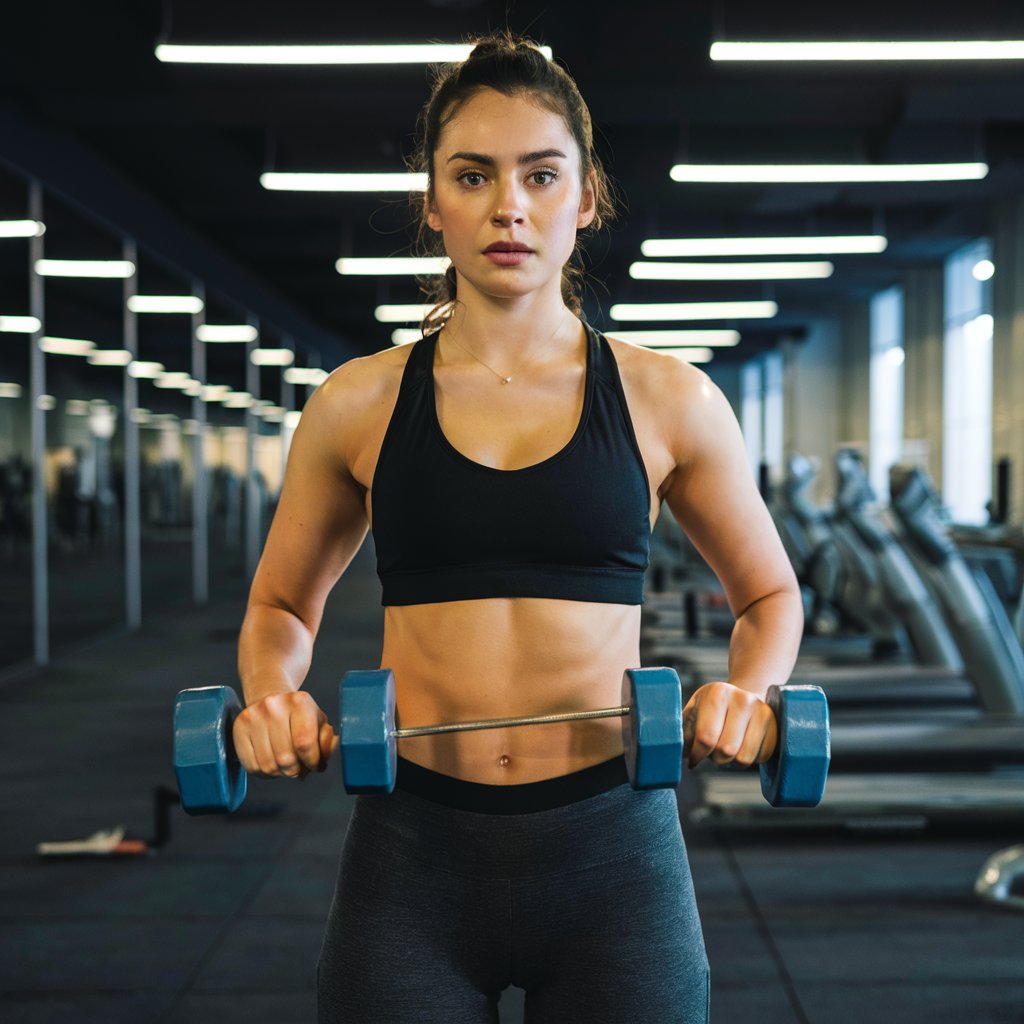
Looking to get fit without breaking the bank? You’re in the right place! In this guide, we’ll explore how you can achieve your fitness goals affordably by finding the cheapest gym options that suit your needs. Say goodbye to pricey memberships and hello to a healthier, happier you! Let’s dive in and discover how you can make affordable fitness a reality.
Benefits of Going to the Gym
Regular gym visits offer a multitude of benefits for both your physical and mental well-being. By engaging in consistent workouts, you can improve your cardiovascular health, strengthen muscles, and boost overall endurance. The gym provides access to a variety of equipment and classes that cater to different fitness goals and preferences.
Exercise releases endorphins, the body’s natural mood elevators, which can help reduce stress levels and enhance mental clarity. Furthermore, working out at the gym allows for social interaction with like-minded individuals who share your commitment to health and fitness. This sense of community can serve as a source of motivation and accountability on your fitness journey.
In addition to physical benefits, regular exercise at the gym can contribute to better sleep quality, increased energy levels throughout the day, and improved self-confidence. Embracing a consistent workout routine not only enhances your physical appearance but also has long-lasting positive effects on your overall quality of life.
Factors to Consider When Choosing a Gym
When choosing a gym, there are several factors to consider to ensure it aligns with your fitness goals and budget. Location plays a crucial role – opt for a gym that is convenient and easily accessible from your home or workplace. This will increase the likelihood of you sticking to your workout routine.
Take note of the equipment available at the gym. Make sure they have the machines and weights necessary for your preferred workouts. Additionally, check if the facility offers classes or personal training sessions if you require guidance or motivation.
Consider the cleanliness and maintenance of the gym as well. A well-maintained environment not only enhances your experience but also ensures safety during workouts. Inquire about membership options and fees – choose a gym that fits within your budget without compromising on quality amenities and services offered.
Budget-Friendly Gym Options
Looking to get fit without breaking the bank? There are plenty of budget-friendly gym options out there that can help you achieve your fitness goals without draining your wallet. When considering affordable gyms, look for facilities that offer competitive membership rates and discounts for students or seniors.
Some gyms may have off-peak hours where prices are lower, making it a smart choice for those on a tight budget. Additionally, keep an eye out for promotions or special deals that could save you even more money on your membership fees.
Consider exploring community centers or local recreational facilities which often provide cost-effective gym memberships with access to basic workout equipment. Another option is online platforms offering virtual classes and workouts at a fraction of the cost of traditional gym memberships.
By researching different options and being flexible with your choices, you can find a budget-friendly gym that fits both your financial needs and fitness goals. Remember, staying active doesn’t have to come with a hefty price tag!
DIY Home Workout Ideas
Looking for ways to stay fit without breaking the bank? DIY home workout ideas are a great way to get your sweat on without spending a fortune.
Start by utilizing bodyweight exercises like squats, push-ups, and planks to build strength and endurance. All you need is a mat or some open floor space to get started.
Get creative with household items as makeshift workout equipment – use water bottles as dumbbells, chairs for step-ups, or towels for slider exercises.
Don’t underestimate the power of cardio at home. Jump rope, dance around your living room, or go for a run in your neighborhood to keep your heart rate up and burn calories.
Online workout videos and apps offer a variety of guided routines for all fitness levels. From yoga and HIIT workouts to dance classes and Pilates – there’s something for everyone right at your fingertips.
Remember, consistency is key when it comes to seeing results from your DIY home workouts. Stay motivated, mix it up, and have fun getting fit from the comfort of your own home!
Making the Most out of Your Gym Membership
When it comes to maximizing your gym membership, consistency is key. Aim to visit the gym regularly and make the most of every workout session. Set specific fitness goals to stay motivated and track your progress along the way.
Explore all the amenities and services offered by your gym. Take advantage of group classes, personal training sessions, or any other perks included in your membership. Variety can keep things interesting and help you avoid plateaus in your fitness journey.
Don’t hesitate to ask for guidance from fitness professionals at the gym. They can provide valuable advice on exercises, form correction, and creating a personalized workout plan tailored to your goals.
Consider trying out different equipment and workouts to challenge yourself and prevent monotony. Mixing up your routine can also target different muscle groups for a well-rounded approach to fitness.
Remember that making the most of your gym membership goes beyond just physical exercise – prioritize self-care by getting enough rest, staying hydrated, and fueling your body with nutritious foods.
Cheapest Gym: Finding the Best Value for Your Fitness Goals
When looking for the cheapest gym that aligns with your fitness goals, it’s essential to consider what amenities and services matter most to you. Think about whether you prioritize a wide range of equipment, group classes, personal training options, or simply a no-frills workout space.
Many budget-friendly gyms offer flexible membership plans such as month-to-month options or discounted rates for longer commitments. This can help you save money while staying committed to your fitness journey.
Consider the location of the gym as well. A closer gym might be more convenient and cost-effective in terms of transportation expenses and time saved on commuting.
Some inexpensive gyms may not have all the bells and whistles of pricier establishments but can still provide everything you need for an effective workout routine tailored to your goals. Look beyond flashy facilities and focus on what truly matters for your fitness progress.
Cheapest Gym: How to Save Money on Your Workout Routine
Looking to save some extra cash on your workout routine? Here are some tips to help you get the most value out of your gym membership without breaking the bank.
Consider opting for off-peak hours when fewer people tend to work out. This way, you can avoid peak pricing and overcrowded facilities.
Another money-saving tip is to pack your own snacks and drinks instead of buying them from the gym’s vending machines or cafe. This simple switch can add up to significant savings over time.
Additionally, take advantage of any free trial periods offered by gyms in your area. It allows you to test out different facilities before committing to a membership.
Don’t forget about group classes or training sessions that may be included in your membership fee. These can provide added value without requiring additional payments for specialized instruction.
Cheapest Gym Memberships: Compare Prices and Features
When looking for the cheapest gym membership, it’s essential to compare prices and features to find the best value for your money. Take some time to research different gyms in your area and see what each one offers in terms of equipment, classes, and facilities.
Some gyms may have lower monthly fees but limited amenities, while others might offer a bit higher pricing with more perks like personal training sessions or group fitness classes included.
Consider what aspects are important to you – whether it’s convenient location, variety of workout options, or access to specialized equipment. Don’t just focus on the price alone; factor in what you’ll actually be getting for that cost.
Comparing prices and features can help you make an informed decision about which gym will best suit your needs without breaking the bank. Finding a budget-friendly gym that aligns with your fitness goals is key to staying motivated and committed to your workout routine.
Cheapest Gym for Students: Budget-Friendly Fitness Options
Being a student often means juggling tight budgets and busy schedules, but prioritizing fitness shouldn’t be out of reach. When looking for the cheapest gym options as a student, consider facilities that offer discounted rates or special student memberships. Many gyms understand the financial constraints students face and provide affordable pricing packages tailored to student needs.
It’s also worth exploring university or college campus gyms which are often included in tuition fees or available at reduced rates for students. These on-campus fitness centers can offer convenient access to workout equipment and classes without breaking the bank. Another budget-friendly option is to check if your school offers any free fitness programs such as yoga sessions, group workouts, or intramural sports leagues.
Don’t forget about online resources like workout videos, apps, or community forums that can help you stay active without spending money on a traditional gym membership. With some creativity and resourcefulness, students can find affordable ways to prioritize their health and wellness while balancing academic responsibilities.
Cheapest Gym Doesn’t Mean Cheapest Quality: Find Your Perfect Fit
When it comes to finding the cheapest gym, many people worry that low cost equals low quality. However, this isn’t always the case. With some research and consideration, you can find a budget-friendly gym that still offers excellent facilities and services.
Start by identifying your fitness goals and preferences. Look for gyms that align with what you’re looking for in terms of equipment, classes, and atmosphere. Just because a gym is affordable doesn’t mean it can’t meet your needs.
Consider location as well. A gym closer to home or work may save you money on transportation costs in the long run. Don’t overlook smaller or independent gyms – they often offer competitive pricing without sacrificing quality.
Take advantage of any free trials or discounted memberships to test out different options before committing. Remember, the cheapest gym for one person may not be the best fit for someone else – prioritize what matters most to you in your fitness journey.”
Don’t Break the Bank: Your Guide to the Cheapest Gym
When it comes to finding the cheapest gym that fits your budget, there are a few key tips to keep in mind. First and foremost, consider what amenities are essential for your workout routine. Some gyms offer basic equipment and classes at a lower cost without compromising quality.
Another way to save money on gym memberships is by looking for promotional deals or discounts. Many gyms run special offers during certain times of the year or have student discounts available. Researching different options can help you find a hidden gem that won’t break the bank.
It’s also important to assess the location of the gym in relation to your home or work. Choosing a nearby gym can not only save you time but also gas money if you’re driving there regularly. Convenience plays a significant role in maintaining consistency with your fitness goals.
By being strategic with your choices and prioritizing what matters most to you in a gym, it’s possible to find an affordable option that meets all your needs without draining your wallet. Remember, staying active shouldn’t come at a high price – explore different alternatives until you discover the perfect fit for both your health and finances.
Get Fit on a Budget: The Cheapest Gym Options for You
Are you looking to get fit without breaking the bank? Finding affordable gym options can help you achieve your fitness goals while staying within your budget. One of the cheapest gym options is to look for local community centers that offer low-cost memberships or discounted rates for residents. These facilities often provide basic workout equipment and classes at a fraction of the cost compared to commercial gyms.
Another budget-friendly option is to explore online workout platforms or apps that offer guided workout routines for a minimal fee or even for free. This way, you can access professional guidance and stay motivated without spending a fortune on gym memberships. Additionally, consider outdoor exercise alternatives like running, biking, or hiking which are not only cost-effective but also great ways to enjoy nature while getting in shape.
By exploring these affordable gym options and being creative with your fitness routine, you can prioritize your health without straining your finances. Remember, getting fit doesn’t have to come with a hefty price tag!
FAQs with answer
Have questions about finding the cheapest gym? We’ve got you covered! Here are some common FAQs to help guide you on your fitness journey.
Q: How can I find the cheapest gym near me?
A: Start by researching local gyms online and comparing their prices. Look for special promotions or discounts that may be available.
Q: Are budget-friendly gyms less equipped than pricier options?
A: Not necessarily. Many affordable gyms offer basic equipment and amenities that meet the needs of most individuals.
Q: Can I negotiate a better price at a gym?
A: It’s worth asking if there are any current promotions or if they can offer a discount for signing up for a longer membership term.
Q: What should I look for in a budget-friendly gym membership?
A: Consider factors like location, hours of operation, cleanliness, equipment maintenance, and class offerings when choosing the best option for you.
Remember, finding an affordable gym that meets your needs is possible with some research and consideration.
Conclusion
Finding the cheapest gym that fits your budget doesn’t mean sacrificing quality or your fitness goals. By considering factors like location, facilities, and membership options, you can discover affordable fitness solutions that work for you. Whether you choose a budget-friendly gym membership or opt for DIY home workouts, remember that staying active and prioritizing your health is essential. With the right mindset and determination, achieving your fitness goals without breaking the bank is entirely possible. So go ahead, explore your options, find the perfect fit for you within your budget constraints, and embark on your journey to a healthier lifestyle!
FOR FURTHER INFORMATION VISIT: fitbuff.com
-

 Entertainment5 months ago
Entertainment5 months agoYoungTube 101: Tapping the Youthful Side of Online Video
-

 Pet1 year ago
Pet1 year agoDog Training Tips: Throw me a bone, will you?
-

 Fitness8 months ago
Fitness8 months agoThe Allure of Sports T-Shirts: A Blend of Style and Team Spirit:
-

 Entertainment1 year ago
Entertainment1 year ago4 Reasons Why She Doesn’t Call You Back
-

 Health1 year ago
Health1 year agoWhat Is Healthy?
-

 Fitness1 year ago
Fitness1 year agoTotal Mind and Body Fitness Blog Carnival 165
-

 Fitness1 year ago
Fitness1 year agoTotal Mind and Body Fitness Blog Carnival 141
-

 Fitness1 year ago
Fitness1 year agoTotal Mind and Body Fitness Blog Carnival 155
